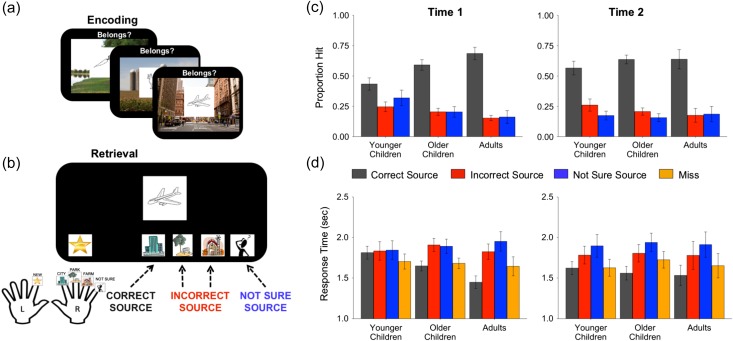Figure 1.
Experimental procedure and behavioral results. (a) At encoding, participants were instructed to remember the item-scene association between a picture drawing and the scene of a farm, a park or a city with which it was presented. (b) At retrieval, participants were presented with studied and novel items and indicated the scene that the item was studied with (by pressing the “park”, “city”, or “farm” button) or if they were unsure about the scene with which the item was studied (by pressing the not sure button, indicated by the uncertain character). Participants had to press the “new” button (indicated by a star) if they thought that the item was novel. (c) Age differences in proportions correct, incorrect, and not sure source responses at T1 and T2 for younger children (N T1 = 44, N T2 = 37), older children (N T1 = 45, N T2 = 40), and adults (N T1 = 30, N T2 = 19). T1 and T2 were spaced approximately 1.4 years apart. (d) Age differences in RTs for correct, incorrect, not sure source, and miss responses at T1 and T2. Data represented as mean ± SEM.

